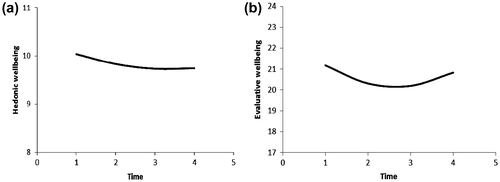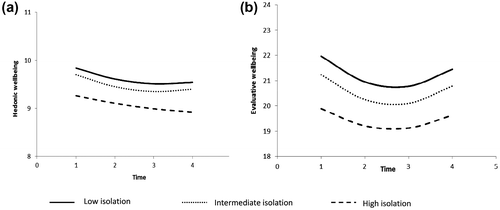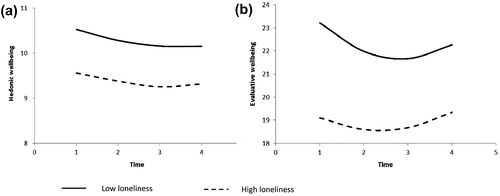Figures & data
Table 1. Characteristics of study population.
Figure 1. Changes in scores for hedonic well-being (a) and evaluative well-being (b) over time.a
Note: aUnadjusted values.

Table 2. Social isolation as a predictor of changes in well-being.Table Footnotea
Figure 2. Scores on hedonic well-being (a) and evaluative well-being (b) over time by levels of social isolation.b
Note: bModels were adjusted for time, time2, age, gender, limiting long-standing illness, quintile of wealth and loneliness category.


